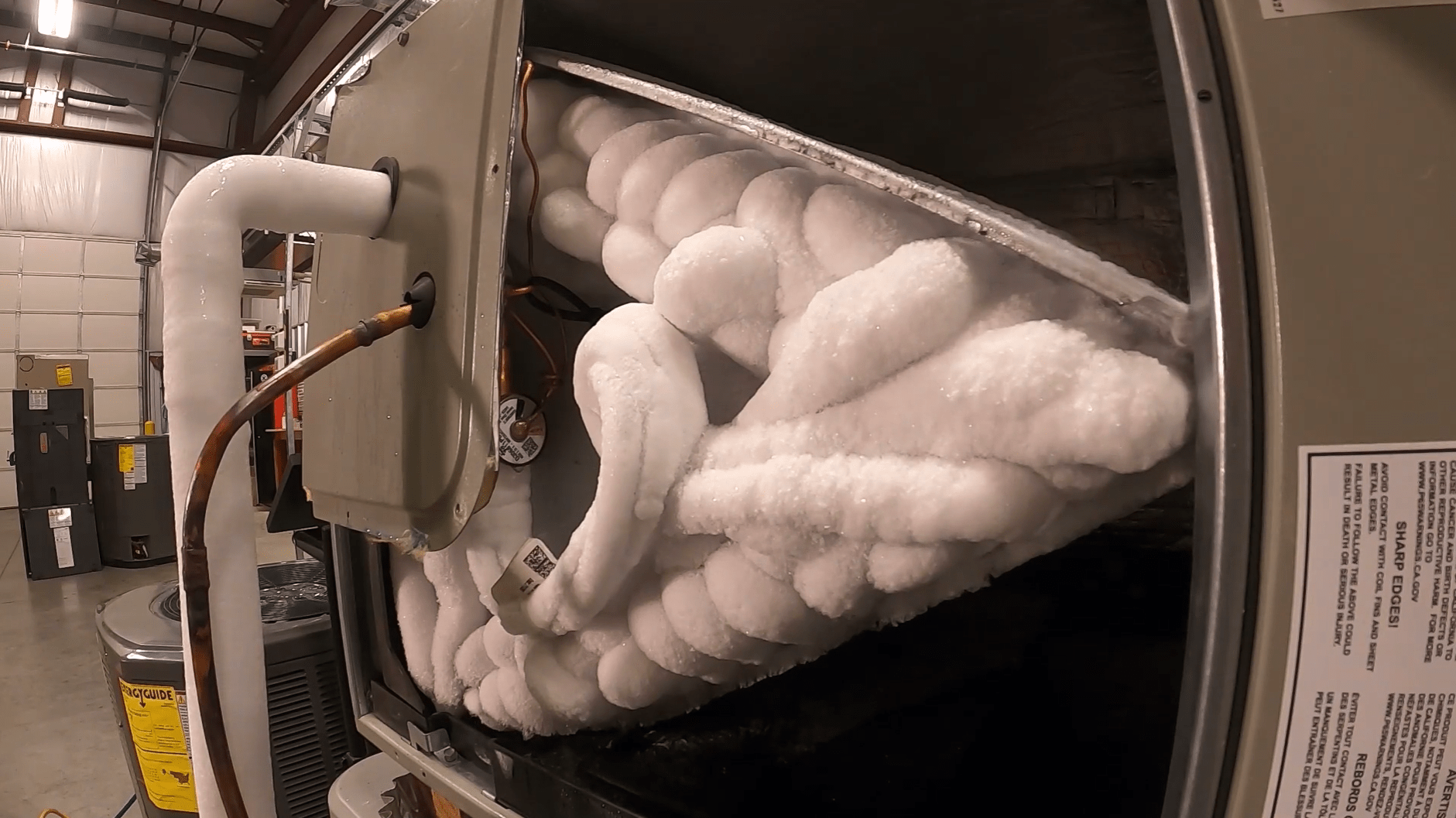Steps to Follow When Your AC Pipe Freezes: Comprehensive Handbook
Steps to Follow When Your AC Pipe Freezes: Comprehensive Handbook
Blog Article
We have encountered the article on Air Conditioner Frozen? How To Fix your Frozen AC Line listed below on the web and figured it made sense to discuss it with you on my blog.

Introduction
Finding that your a/c pipeline is iced up can be worrying, specifically throughout warm summer season when you rely upon your ac system the most. Comprehending what to do in such a circumstance is critical to prevent more damage to your cooling system and ensure your convenience inside your home.
Understanding the Causes
A number of variables can add to the cold of an air conditioning pipe. Understanding these causes can aid you address the concern effectively.
Absence of Airflow
One typical root cause of a frozen AC pipeline is inadequate air movement. When the air flow over the evaporator coil is restricted, it can cause the coil to go down below freezing temperature, resulting in ice development on the pipeline.
Reduced Refrigerant Levels
Not enough refrigerant levels in your AC system can additionally lead to an icy pipe. Reduced refrigerant degrees can cause the pressure in the system to drop, bring about the freezing of wetness on the evaporator coil.
Winter Conditions
In colder environments, freezing temperature levels outside can add to the freezing of a/c pipelines. If your air conditioner unit is not correctly shielded or if there are leakages in the ductwork, cold air can penetrate the system, causing the pipeline to freeze.
Dirty Air Filters
Unclean or blocked air filters can restrict air flow in your AC system, resulting in different issues, including an icy pipeline. It's necessary to replace or cleanse your air filters on a regular basis to make sure correct air movement and prevent ice build-up.
Indicators of a Frozen Air Conditioner Pipe
Acknowledging the signs of an icy AC pipeline is vital for prompt activity.
Decreased Airflow
If you see a considerable decline in airflow from your vents, it can suggest an icy pipe.
Ice Buildup on the Pipe
Noticeable ice build-up on the refrigerant line or the evaporator coil is a clear indication of an icy air conditioner pipeline.
Strange Sounds from the Unit
Unusual sounds, such as hissing or bubbling, coming from your air conditioning system can indicate that there's ice existing on the pipe.
Immediate Actions to Take
When faced with a frozen AC pipe, it's important to act swiftly to avoid further damage to your cooling system.
Switching off the a/c
The primary step is to turn off your a/c unit to stop the system from running and exacerbating the problem.
Looking for Blockages
Evaluate the area around the indoor unit for any kind of obstructions that may be obstructing air movement, such as furniture or drapes.
Thawing the Pipe
You can utilize mild techniques like positioning towels soaked in warm water around the icy pipeline to aid thaw it slowly.
Preventive Measures
Taking preventive measures can assist stay clear of future occurrences of a frozen a/c pipeline.
Regular Maintenance Checks
Schedule normal upkeep talk to an expert HVAC service technician to make sure that your a/c system is running effectively.
Changing Air Filters
Frequently replace or clean your air filters to stop air flow limitations and maintain ideal performance.
Insulating Exposed Pipes
If your a/c pipes are subjected to cool temperature levels, think about insulating them to stop freezing throughout winter season.
Seeking Professional Help
If DIY methods stop working to fix the concern or if you're uncertain regarding exactly how to continue, it's finest to seek help from a certified HVAC specialist.
When DIY Methods Fail
If your attempts to thaw the pipe or address other problems are not successful, it's time to call in a professional.
Value of Hiring a Professional HVAC Technician
A licensed HVAC professional has the proficiency and tools necessary to detect and fix problems with your a/c system safely and effectively.
Conclusion
Managing a frozen air conditioning pipeline can be a discouraging experience, but recognizing exactly how to react can assist minimize damages and recover comfort to your home. By understanding the causes, identifying the indications, and taking punctual action, you can properly deal with the concern and stop future events.
What to Do If Your AC Line Is Frozen
Make Sure All Supply and Return Air Vents Are Open
If you notice problems with airflow, the first thing you should do is check your supply and return vents. Supply vents distribute clean, conditioned air throughout your home. As this air becomes stale, it’s pulled into the return vent, where it’s reconditioned before being sent back out through the supply vent.
When these vents are closed, air won’t flow in the home. Before examining your AC, check the vents in every room and ensure they’re all open.
Check for a Dirty Air Filter
Another possible cause of limited airflow is a dirty air filter. Your air conditioner’s filters catch elements you don’t want to breathe in, such as dirt and dust. Over time, filters can become clogged, ultimately blocking air from flowing in and out. The lack of airflow can then cause the entire coil to freeze and will completely restrict any air from moving through it. The AC may need to be powered off for one to two days to allow the coil to thaw after replacing the filter to allow proper functioning of the unit. This debris can also accumulate on your AC’s evaporator coil, requiring a more serious repair. In general, air filters should be cleaned regularly (about every two weeks).
Assess Your Outdoor Unit
In addition to checking your AC, assessing the outdoor unit is a good idea. Also known as the condensing unit, it works with your interior unit to release heat outside. An issue with the outdoor unit can result in rising internal temperatures.
Overgrown Shrubs or Clogged Leaves
From leaves and twigs to shrubs and debris, there’s no shortage of outdoor elements that can accumulate around your condensing unit. When these elements get lodged inside the unit, they can block airflow. Fortunately, removing the blockage can solve the problem.
Sounds of a Broken Fan
Shrubs and leaves aren’t the only things that can impede your outdoor unit’s airflow. If the fan is broken, the unit won’t be able to properly get rid of heat — which means the internal temperature won’t go down. First, make sure the fan is spinning. If it is, check for the following sounds of a broken fan:
Buzzing Rattling Screeching Hissing Clicking Preventative Measures
Nobody wants to deal with a frozen AC line. In addition to causing problems with your air conditioner, they require professional repairs. On the bright side, there are preventative measures you can take to help ensure this issue doesn’t arise in the first place.
https://www.coopergreenteam.com/blog/what-to-do-if-ac-line-frozen

As a fervent person who reads about How can I fix an air conditioner’s frozen pipe?, I assumed sharing that piece of content was essential. Appreciated our write-up? Please share it. Help others check it out. I am grateful for your time. Visit again soon.
Schedule Today Report this page